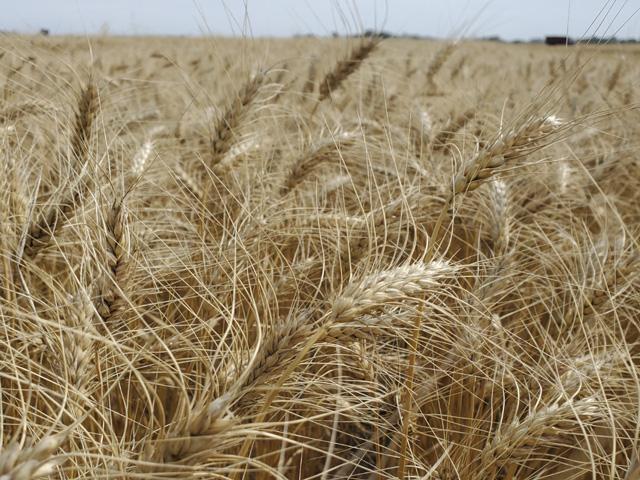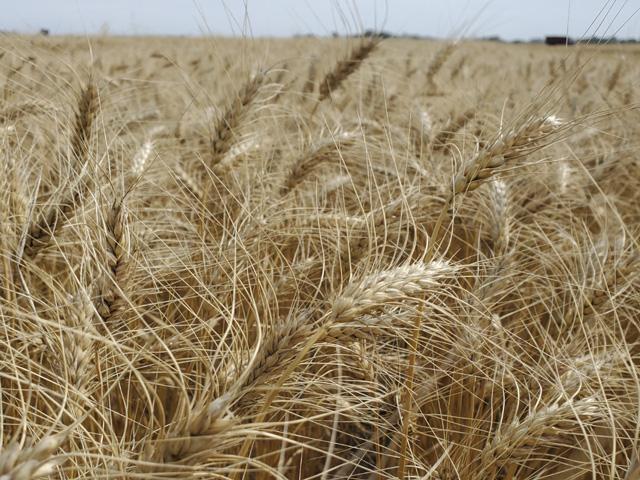Market Matters Blog
2023 NDWC Spring Wheat and Durum Quality Reports Show Variable Results
Every year after harvest is completed, the North Dakota Wheat Commission (NDWC) releases a thorough report with information from other wheat and durum associations on the quality of the spring wheat and durum crops in the key growing states of Minnesota, Montana, North Dakota, South Dakota, Idaho, Oregon and Washington. The report is studied by mills and exporters, as it covers every single aspect of each crop from quality to baking specifications and more.
Farmers faced challenges in the spring at planting time, which began later than normal in many parts of the region due to a cold spring and slow warm-up of soil temperatures, noted the report. Parts of the region also had late-season snow, which created overly wet soil conditions into early May. More favorable planting conditions allowed planting to accelerate in the latter half of May, with most parts of the region completed by early June, near normal.
Starting with spring wheat, NDWC noted that, while the crop is a "high-grading" crop with protein content similar to a year ago, levels are variable across the region due to difference in precipitation. A challenge for some buyers this year is the below-normal vitreous kernel levels (dark, hard and vitreous). Dark Northern Spring Wheat (75% DHV or better) is a must have for Japan and other Asian buyers who demand excellence when buying U.S. wheat. With the overall crop averaging 57% DHV, exporters have been reported as paying a premium for the 75% or better DHV wheat.
As a reminder, here are the subclasses of spring wheat as defined by the Federal Grain Inspection Service (FGIS). Subclass is a separate marketing factor based on vitreous kernel content: Dark Northern Spring (DNS), at least 75% or more dark, hard, vitreous kernels; Northern Spring (NS), between 25% and 74% dark, hard, vitreous kernels; and Red Spring (RS), less than 25% dark, hard, vitreous kernels.
The report noted other kernel qualities are very positive, including low moisture, no DON (vomitoxin), and little to no damage. Laboratory evaluation of the crop is showing an improvement over recent years, including stronger dough properties and higher loaf volumes.
The crop average grade is a No. 1 Northern Spring, with nearly 90% of the survey samples grading a No. 1, which is exceptionally high, noted the report. Crop average test weight is 61.2 pounds per bushel (80.4 kg/hl), slightly lower than 2022 and the five-year average, with three-fourths of the crop is greater than 60 pounds per bushel (78.9 kg/hl). Average damaged kernel levels are very low at 0.1%, as disease pressures were minimal to nonexistent. Overall vitreous kernel levels average 57%, notably lower than last year and the five-year average. Distributions show only 38% of the crop samples exceed 75%, or the DNS subclass, while 14% of the crop falls below 25%.
Protein content is 14.1% (12% moisture basis), similar to last year, but one-half percentage-point lower than the five-year average. Distribution of protein shows 63% of the survey samples exceeding 14% protein and just 14% falling below 13% protein. However, the percentage of the crop below 12% protein is nearly double a year ago in pockets of the region which received well-above-normal precipitation. The Minneapolis spot spring wheat market has been paying high premiums for the higher proteins that show for sale. In addition, the EU is also experiencing low-protein wheat, which may be beneficial to U.S. exports eventually.
P[L1] D[0x0] M[300x250] OOP[F] ADUNIT[] T[]
For flour mills, baking evaluations are showing improved loaf volumes compared to last year and similar to the five-year average. The crop averages 969 cubic centimeters, with some parts of the region reaching up to 1050.
Dough handling properties scored slightly lower than a year ago, but bread scores rated similar.
Production of the 2023 U.S. spring wheat crop is 468 million bushels (12.7 million metric tons), up 5% from last year on higher planted area and above-average yields noted the report.
2023 US DURUM CROP QUALITY MIXED
Increased moisture conditions at durum harvest impacted quality characteristics in some of the crop. "Variable" is the key word to describe the crop in terms of both yield and quality, noted the report. Overall, this year's crop shows high grading and kernel characteristics with lower vitreous kernel counts. Protein is higher and the crop shows increased gluten strength with end-use characteristics similar to an average crop.
Durum is the hardest of all wheats. Its density, combined with its high protein content and gluten strength, make durum the wheat of choice for producing premium pasta and couscous products.
Semolina is the milling process of the endosperm that is ground into a granular product with a mixture of water and semolina forming a stiff dough. Pasta dough is then forced through "dies," or metal discs with holes, to create hundreds of different shapes. Durum production is geographically concentrated in the Northern Plains because it demands a special agronomic environment. In most years, the states of North Dakota and Montana produce 80% of the U.S. durum crop.
As a reminder, here are the sub-classes of durum wheat: Hard Amber Durum (HAD) at least 75% or more hard, vitreous, kernels; Amber Durum (AD) between 60% and 74% hard, vitreous kernels; Common Durum (D) --- less than 60% hard, vitreous kernels. In addition, nearly most, if not all durum buyers will base their top, "choice" price off a grade of No. 1 HAD, 85 HVAC O/B, choice milling quality specs to apply.
In turn, you may see four different prices posted for durum. An average of Nov. 10 delivered elevator posted bids in North Dakota shows Choice durum at $9.25, Terminal durum (75% to 84% HVAC) at $8.25, Amber durum at $7.50 and Common durum at $6.50. These prices will fluctuate as demand strengthens or lessens and especially if quality is an issue for buyers.
Production of the 2023 Northern Durum crop was 6% higher than last year at 52.9 million bushels, (1.44 MMT). While acres increased by 7%, yields were quite variable due to weather and growing conditions and trended lower overall noted the report.
NDWC durum quality report: https://www.ndwheat.com/…
NDWC spring wheat quality report: https://www.ndwheat.com/…
Mary Kennedy can be reached at mary.kennedy@dtn.com
Follow her on X, formerly known as Twitter, @MaryCKenn
(c) Copyright 2023 DTN, LLC. All rights reserved.






Comments
To comment, please Log In or Join our Community .